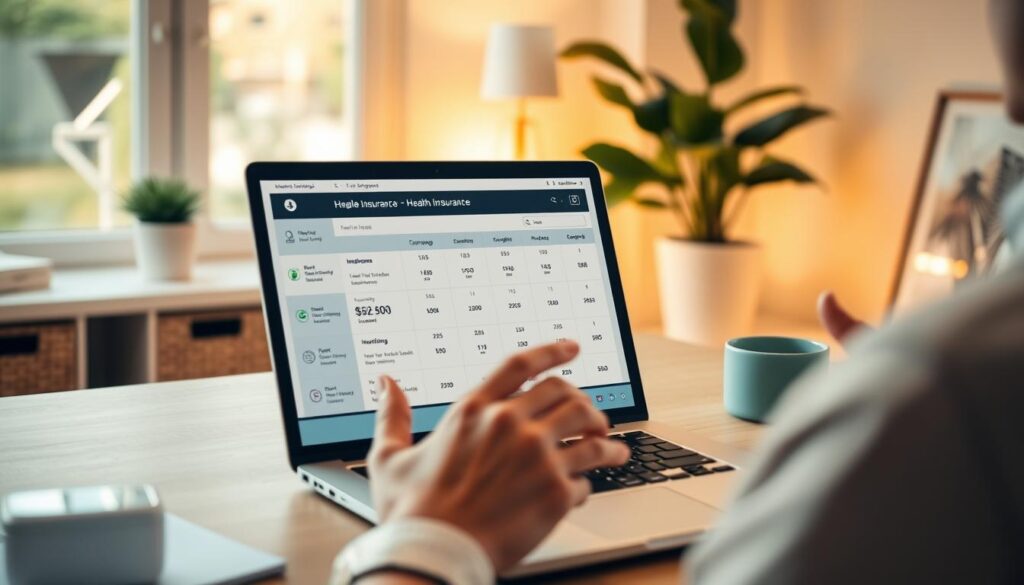Over 22 million Americans now work from home full-time, according to Pew Research. If you’re one of them, understanding how to maximize your savings is crucial. The rules differ based on whether you’re self-employed or a traditional employee.
Independent contractors and freelancers qualify for more write-offs, like the home office deduction. Employees, however, face stricter guidelines under current laws. Changes from the Tax Cuts and Jobs Act (TCJA) remain in effect through next year.
Proper documentation is key to avoiding audits. Many people mistakenly claim ineligible expenses, such as temporary workspaces. We’ll break down the IRS-approved options to help you keep more of your hard-earned money.
Key Takeaways
- Self-employed individuals get more deductible options than employees.
- The TCJA impacts eligibility through 2025.
- Always maintain receipts and records for claimed expenses.
- State laws may offer additional reimbursement opportunities.
- Side hustles can unlock extra tax benefits.
Who Qualifies for Remote Work Tax Deductions in 2025?
Not everyone who works remotely qualifies for the same financial benefits. Your employment status—whether you’re self-employed or a traditional employee—plays a huge role. The Tax Cuts and Jobs Act (TCJA) still shapes these rules, so let’s break down who gets what.
Self-Employed vs. W-2 Employees: Who Gets the Deduction?
If you’re an independent contractor, you’re in luck. You can claim expenses like internet bills, supplies, and even a home office deduction. W-2 employees, however, lost most write-offs under the TCJA—unless you have a side gig.
Here’s a quick comparison:
- 1099 workers: Deduct a portion of rent, utilities, and repairs.
- Employees: Only qualify if your side business has an exclusive workspace (think: a garage studio).
«A part-time Etsy shop or freelance gig can open doors to deductions most employees miss,» explains a TurboTax advisor.
IRS Rules for Home Office Eligibility
The IRS rules require your workspace to be used exclusively for business. A kitchen table won’t cut it—but a converted closet might. Pro tip: Snap photos of your setup and save utility bills as proof.
Exceptions exist for daycare providers or inventory storage. California’s AB5 law adds another layer for gig workers, so check your state’s rules too.
17 Tax Deductions for Remote Workers in 2025 (IRS-Approved)
Working from home offers financial perks beyond flexibility—if you know where to look. From your internet bill to that ergonomic chair, many costs can reduce your taxable income. Here’s how to claim them legally.

Home Office Deduction: Simplified vs. Regular Method
The IRS lets you choose between two ways to claim your workspace. The simplified method offers $5 per square foot (up to 300 sq ft). A 200 sq ft office? That’s a $1,000 deduction.
Prefer detail? The regular method calculates actual costs like rent and electricity. A *daycare operator* using 40% of their home could save more this way.
| Method | Best For | Max Deduction |
|---|---|---|
| Simplified | Small spaces | $1,500/year |
| Regular | High-cost areas | Varies by expense |
Business Supplies and Equipment You Can Write Off
Your laptop, desk, and even project management software are deductible. Tech depreciates over time—5 years for computers, 7 for furniture. Pro tip: Cybersecurity tools and cloud storage often qualify too.
Internet, Phone, and Utility Expenses
Mixed-use services like WiFi can be partially claimed. A consultant using 60% of their internet for work? That’s a 60% deduction. VoIP phones and dedicated business lines are 100% deductible.
«Track every receipt—apps like Expensify turn your phone into an audit-proof filing cabinet.»
Maximizing Your Home Office Deduction
Your home office setup could unlock major savings—if you meet IRS standards. The key lies in proving your space is used exclusively for work. Bedrooms or multipurpose areas won’t qualify, but a partitioned corner might.
What Counts as a Dedicated Workspace?
The IRS requires defined boundaries—think room dividers or permanent walls. A 2023 Tax Court case sided with a photographer who used her basement studio solely for editing. Temporary setups, like kitchen tables, fail the test.
Smart solutions to prove exclusivity:
- Wi-Fi heat maps showing device usage in your workspace
- Time-stamped photos of your setup (avoid personal items in frames)
- Receipts for business-only furniture (e.g., a standing desk)
How to Calculate Square Footage for Your Deduction
Measure only the area used regularly for work. Hallways and storage closets don’t count. Laser measures are more accurate than apps for irregular layouts.
| Tool | Best For | Accuracy |
|---|---|---|
| Laser Measure | Large or odd-shaped rooms | ±1/16 inch |
| Mobile App | Quick estimates | ±3 inches |
«Miscounting square footage is a top audit trigger. Round down to stay safe.» —CPA Jared Richards
For IRS Form 8829, track:
- Total home size (e.g., 1,200 sq ft)
- Workspace size (e.g., 150 sq ft = 12.5% of property)
- Percentage of utilities allocated (internet, electricity)
Business Expenses You Didn’t Know Were Deductible
Did you know your podcast gear might qualify as a deductible expense? Beyond home office costs, many freelancers miss out on write-offs for learning, marketing, and even retirement savings. Here’s how to spot them.

Continuing Education and Professional Development
Upgrading your skills can lower your taxable income. Platforms like Coursera or LinkedIn Learning count if courses relate to your work. A graphic designer taking Photoshop classes? That’s a business expense.
Pro tip: Save syllabi to prove relevance. State-specific licenses (e.g., realtor renewals) also qualify.
Marketing and Advertising Costs
From TikTok ads to trade show swag, promoting your brand is deductible. The IRS caps some expenses at $5,000 annually, but every dollar counts.
- Digital tools: Mailchimp subscriptions, Canva Pro
- Physical materials: Branded USB drives (pens are iffy)
- AI software: ChatGPT Plus for content creation
Retirement Plan Contributions for Self-Employed Workers
Saving for retirement isn’t just smart—it’s a tax shield. SEP-IRAs and Solo 401(k)s let you stash pre-tax money, reducing your taxable income.
| Plan | 2025 Contribution Limit | Best For |
|---|---|---|
| SEP-IRA | 25% of net earnings | Solopreneurs |
| Solo 401(k) | $22,500 + profit-sharing | Side hustlers |
«A SEP-IRA cut my taxable income by $12,000 last year—just by maxing contributions.» —Freelance developer Tara R.
Travel and Vehicle Deductions for Remote Workers
Road trips for work? You might be sitting on untapped tax savings. Whether you’re driving to client meetings or flying for conferences, the IRS allows write-offs for legitimate business travel. The key is knowing what qualifies—and how to prove it.
Business Travel: What’s Covered?
The overnight+100 mile rule is your golden ticket. If your trip requires staying away overnight and exceeds 100 miles from home, expenses like hotels and meals qualify. Mixing business with leisure? Allocate costs based on work days.
Smart strategies for hybrid trips:
- Book flights with refundable tickets for flexible scheduling
- Use 60/40 splits for 3 business days + 2 vacation days
- Save conference agendas to justify attendance
«Clients think I’m on vacation when I deduct my Miami workation. Joke’s on them—I logged 30 billable hours.» —Freelance marketer Diego S.
Mileage and Vehicle Expenses for Contractors
The 2024 rate of $0.67 per mile covers gas, wear-and-tear, and insurance. EV owners get bonus perks: Charging station installations are 30% deductible up to $1,000.
| Tracking App | Best Feature | Cost |
|---|---|---|
| MileIQ | Automatic drive detection | $5.99/month |
| TrackVia | IRS-compliant reports | Free (basic) |
Avoid these receipt red flags:
- Missing merchant details
- Personal purchases on business tabs
- Uber receipts without destination notes
Need meals on the go? Use GSA.gov per diem rates:
| City Tier | Meal Allowance |
|---|---|
| High-cost (e.g., NYC) | $79/day |
| Standard | $59/day |
Navigating Health Insurance and Other Benefits
Health coverage isn’t just protection—it’s a potential tax saver for independent professionals. Whether you’re freelancing full-time or running a side business, strategic insurance choices can lower your taxable income. The rules differ significantly between health plans and business policies.

Self-Employed Health Insurance Deductions
Freelancers can deduct 100% of health premiums if they meet two criteria:
1. The plan is under your business name or Social Security number
2. You show a net profit for the year
ACA marketplace plans often provide better long-term value than short-term options. While cheaper upfront, short-term policies may disqualify you from premium tax credits. Dental and vision coverage can be added separately—track those receipts!
Health Savings Accounts (HSAs) offer a rare double deduction:
– Contributions reduce taxable income
– Withdrawals for medical costs are tax-free
| Plan Type | Deductible? | Best For |
|---|---|---|
| ACA Marketplace | Yes | Chronic conditions |
| Short-Term | Partial | Gap coverage |
| HSA-Eligible | Yes + savings | High earners |
Writing Off Business Insurance Premiums
Cyber liability coverage is now deductible for digital nomads. A 2024 IRS memo clarified that protection against data breaches qualifies as a business expense. Consultants should consider Errors & Omissions (E&O) policies too—one freelance architect saved $3,200 last year by claiming hers.
Don’t overlook disaster insurance for your home office. If your state requires flood or earthquake coverage, those premiums often qualify. Professional organizations like Freelancers Union sometimes offer group rates with additional tax benefits.
«My E&O policy costs $800 annually but reduces my taxable income by that amount—effectively making it free after savings.» —Web developer Marcus T.
Telehealth subscriptions became permanently deductible post-pandemic. Services like Teladoc that you use exclusively for business consultations? Those are 100% write-off eligible with proper documentation.
Tips to Avoid IRS Red Flags
Proper documentation is your best defense against audits. Whether you’re a freelancer or an employee with side gigs, the IRS scrutinizes deductions closely. These strategies keep your claims bulletproof.
Record-Keeping Best Practices
Digital receipts are now IRS-approved—if they’re legible and timestamped. Apps like Expensify auto-categorize expenses, while cloud backups protect against disasters. Paper works too, but scans are safer long-term.
Follow the 3-year rule for document retention. The IRS can audit returns up to three years after filing. Exceptions:
- 1099-NEC forms: Keep indefinitely if income exceeds $600.
- Home office records: Hold until you sell the property.
- Cryptocurrency: Track every transaction with exchange logs.
Common Mistakes to Avoid
Mixing personal and business tools is risky. A dedicated Zoom account for client calls proves exclusivity. Same goes for payment apps—Venmo’s «business profile» feature creates cleaner records.
Other pitfalls:
- NFT purchases: Only deductible if used for marketing (e.g., as website art).
- Quarterly taxes: Missing deadlines triggers penalties. Use IRS Form 1040-ES calculators.
- IDR requests: Respond within 30 days to avoid automatic adjustments.
| Storage Solution | Pros | Best For |
|---|---|---|
| Google Drive | Free up to 15GB | Small businesses |
| Dropbox Vault | PIN-protected files | Sensitive documents |
| Fireproof safes | Physical backup | Original receipts |
«I survived an audit by showing my QuickBooks mileage logs—the agent said digital trails are harder to fake.» —Lyft driver Marco P.
Conclusion
With the TCJA rules still in play this year, now’s the time to organize your home office claims. Whether you’re self-employed or have a side hustle, every dollar saved counts.
Consult a CPA before April 15 to maximize your money-saving moves. Tax software can help, but personalized advice ensures you don’t miss state-specific breaks.
Looking ahead, 2026 may bring new laws. Stay updated by downloading IRS Pub 587 and tracking expenses monthly. Got unique scenarios? Share them below—we’ll help you navigate.
Pro tip: Grab our free expense tracker template to simplify record-keeping. Small steps now lead to big refunds later.
FAQ
Who qualifies for home office deductions in 2025?
If you’re self-employed or a contractor, you can claim the home office deduction. W-2 employees can’t unless their employer reimburses them. The IRS requires the space to be used regularly and exclusively for business.
Can I deduct my internet and phone bills?
Yes, if you use them for work. You can write off a portion of these costs based on business use. Keep records to prove the percentage used for your job.
What’s the difference between the simplified and regular home office deduction methods?
The simplified method lets you deduct per square foot (up to 300 sq. ft.). The regular method calculates actual expenses like rent, utilities, and repairs based on workspace size.
Are business travel expenses deductible for remote workers?
Yes, if travel is work-related. Flights, hotels, and meals (50% deductible) qualify. Keep receipts and document the business purpose of each trip.
Can I deduct health insurance as a self-employed worker?
Absolutely. Premiums for medical, dental, and long-term care insurance are deductible if you’re self-employed and not eligible for an employer-sponsored plan.
How do I prove my home office is deductible?
The space must be used only for work. Take photos, save lease agreements, and track utility bills. Avoid mixing personal and business use in the same area.
What business supplies can I write off?
Office supplies (paper, ink), software, and equipment like laptops or desks are deductible. Just ensure they’re necessary for your work.
Can I deduct mileage if I drive for work?
Contractors can claim the standard mileage rate (67 cents per mile in 2024, check 2025 updates) or actual vehicle expenses. Track dates, miles, and business purposes.



